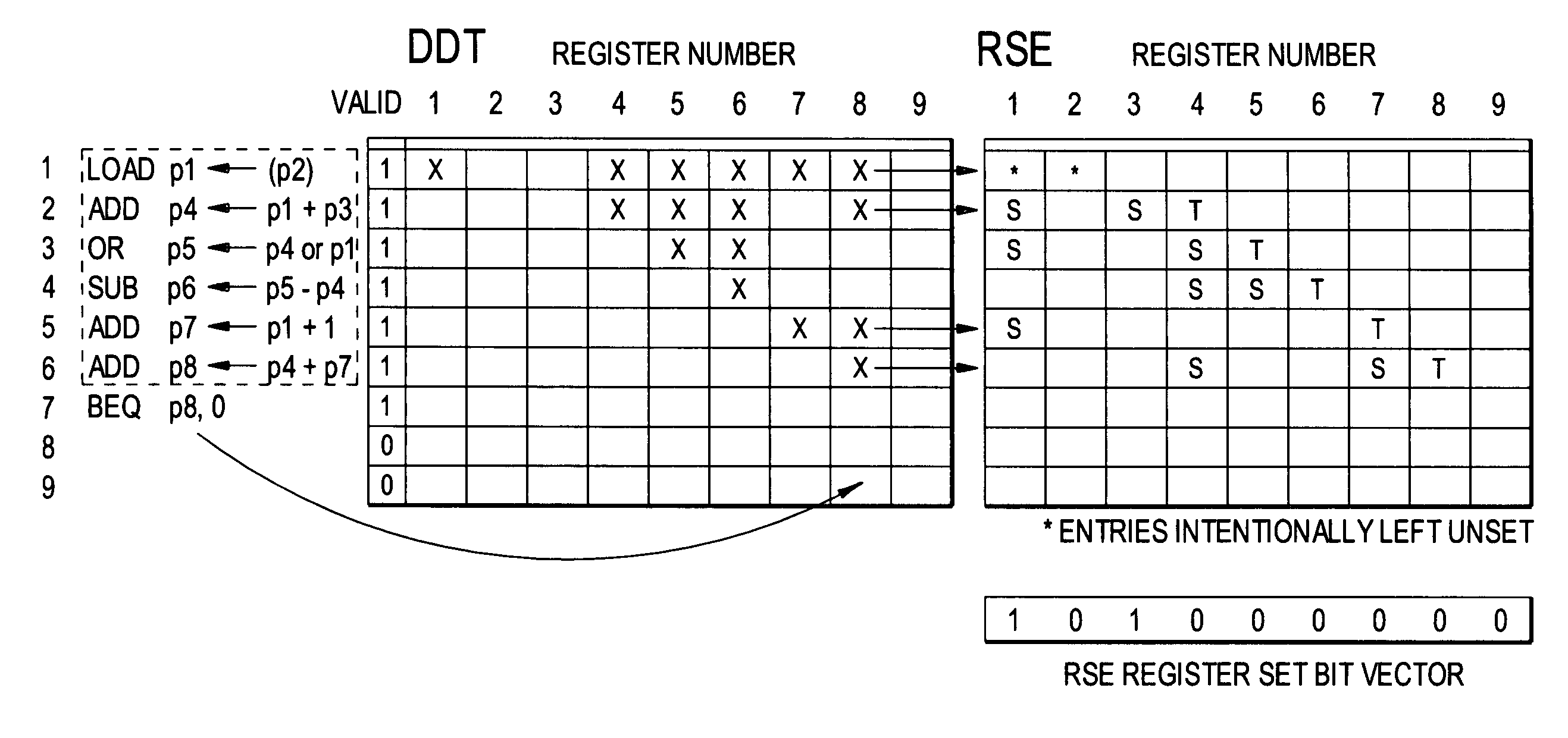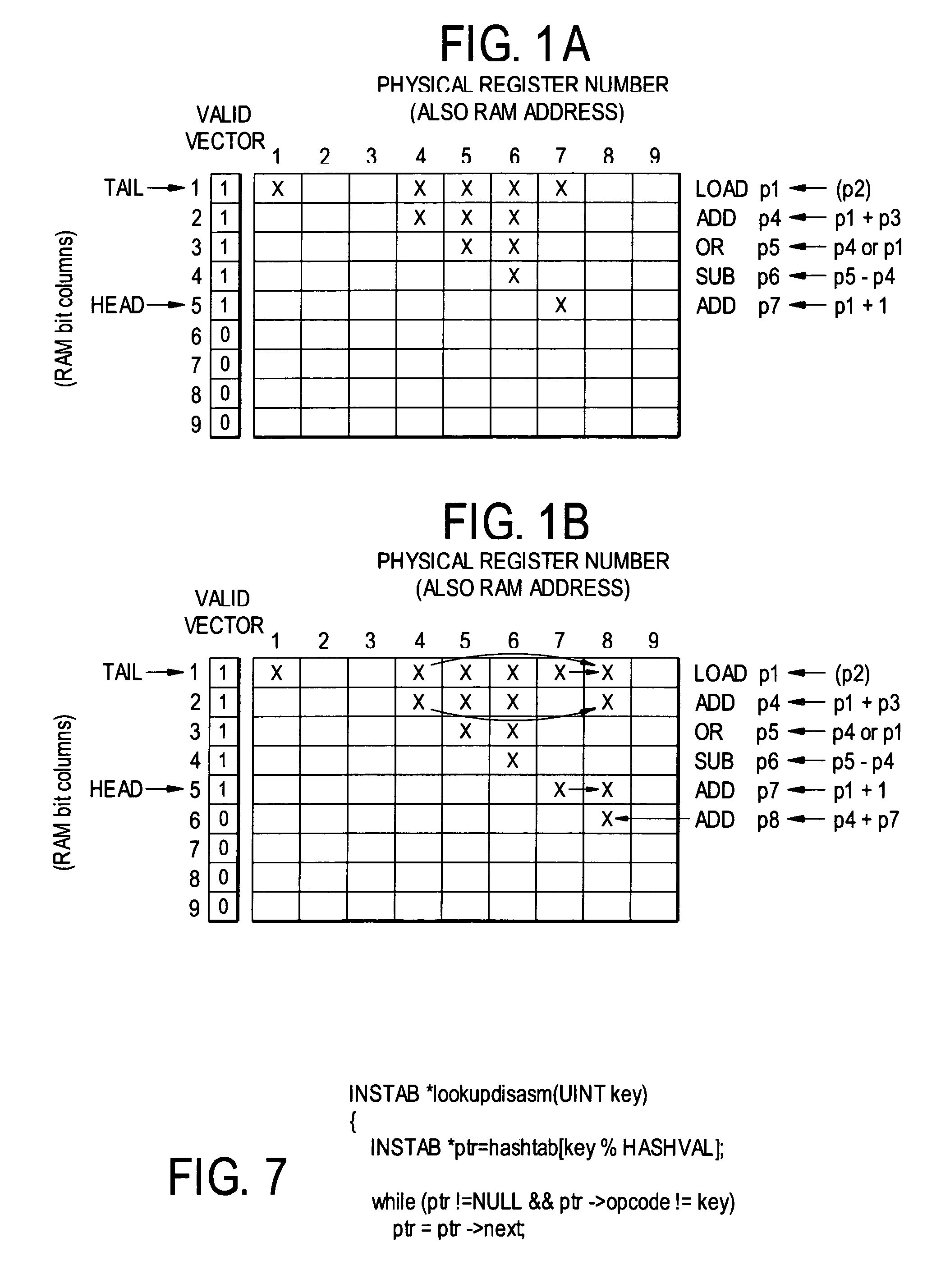Dynamic data dependence tracking and its application to branch prediction
a dynamic data and dependence tracking technology, applied in the field of processor design, can solve the problems of limiting further gains, yielding the cost-performance gains necessary for widespread commercial adoption, and slowed down the performance gains of ilp, so as to achieve precise data dependence information and improve the effect of ilp
- Summary
- Abstract
- Description
- Claims
- Application Information
AI Technical Summary
Benefits of technology
Problems solved by technology
Method used
Image
Examples
Embodiment Construction
[0076]A preferred embodiment of the present invention and results therefrom will be disclosed in detail with reference to the drawings.
[0077]Data dependence analysis is a fundamental technique employed in compilers to maintain the correctness of code when performing optimization transformations. A data dependence chain shows ordering relationships between a sequence of instructions that must be preserved. A data dependence chain is defined relative to a particular instruction. Each instruction has its own data dependence chain, though different chains may share common instructions.
[0078]A description follows of the Data Dependence Table (DDT), a hardware method for incrementally maintaining the data dependence chains for the set of instructions in the processor pipeline.
[0079]The DDT is implemented as a RAM. The depth of the RAM is one row for each physical register. The width of a row is one bit per instruction that can be in flight in the pipeline, thus, each instruction occupies ...
PUM
 Login to View More
Login to View More Abstract
Description
Claims
Application Information
 Login to View More
Login to View More - R&D
- Intellectual Property
- Life Sciences
- Materials
- Tech Scout
- Unparalleled Data Quality
- Higher Quality Content
- 60% Fewer Hallucinations
Browse by: Latest US Patents, China's latest patents, Technical Efficacy Thesaurus, Application Domain, Technology Topic, Popular Technical Reports.
© 2025 PatSnap. All rights reserved.Legal|Privacy policy|Modern Slavery Act Transparency Statement|Sitemap|About US| Contact US: help@patsnap.com



